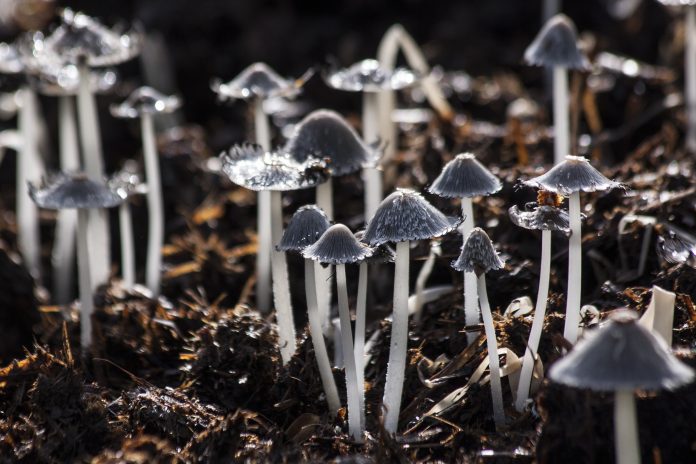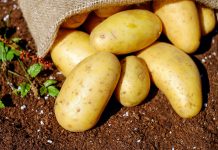Gardening is a great way to reap the rewards of nature, providing fresh produce for your table, and bringing beauty into your home. But did you know that you can also cultivate an entirely different type of food in your garden?
With relatively little effort and minimal investment, you can learn the basics of mushroom cultivation and start growing edible mushrooms from the comfort of your own homestead! In this blog post, we’ll be exploring all aspects of mushroom cultivation — what it entails, what materials are needed to get started with growing mushrooms at home, and which species are best for beginners.
So if you’re looking for a fun activity or an exciting new challenge when it comes to gardening, then look no further than learning how to grow mushrooms!
What is Mushroom Cultivation and Why it is Beneficial
Mushroom cultivation is a fascinating process that involves growing edible fungi for consumption. The cultivation of mushrooms has been around for centuries and has become increasingly popular in recent years due to its numerous benefits.
These benefits range from providing a sustainable source of food to a unique hobby that can be enjoyed by anyone. One of the biggest advantages of mushroom cultivation is the low environmental impact it has. Unlike traditional farming, mushroom cultivation requires minimal space and resources, making it an ideal source of food for those who want to live a more sustainable lifestyle. Additionally, mushrooms are packed with vitamins, minerals, and antioxidants, making them a highly nutritious food.
Whether you’re looking for a new hobby or a sustainable source of food, mushroom cultivation is an excellent choice that offers numerous benefits.
The Different Types of Mushrooms and Their Uses
Mushrooms are fascinating organisms that come in a variety of sizes, shapes, and colors. They have been treasured by humans for ages, not only for their distinct flavor but also for their medicinal properties. Many types of mushrooms can be used in different ways.
Some are delicious in soups, stews, and salads, while others can be used as a meat substitute or for flavoring. Some mushrooms, such as shiitake, have anti-inflammatory qualities and are reputed to help cure certain cancers.
Meanwhile, the reishi mushroom is believed to improve overall immunity, reduce stress, and sleep aid. With the vast array of mushrooms available, it’s no wonder they have become such an important part of our diets and natural remedies. Magic mushrooms like the ones available at mushroom lyfe, known for their psychoactive effects, are used recreationally but also show potential in mental health research.
Tips for Growing Mushrooms in Your Home
Who doesn’t love adding new ingredients to their cooking? If you’re looking to spice things up in the kitchen, why not try growing your own mushrooms?
Not only is it a rewarding experience, but it also ensures that you’ll always have fresh mushrooms on hand. While it may seem daunting at first, there are a few tips and tricks that can make mushroom growing a breeze.
Start by choosing the type of mushroom you want to grow, then gather the materials needed such as a growing kit or spores. Make sure to keep the growing environment at the right temperature and humidity levels, and watch as your mushroom crop flourishes.
Soon enough, you’ll be able to add your own home-grown mushrooms to your favorite dishes.
Understanding the Basics of Mushroom Substrates and Spawns
If you’re looking to grow mushrooms, it’s important to understand the basics of mushroom substrates and spawns. Substrates refer to the materials that provide a source of nutrients for the mushrooms to grow, while spawns are the materials that contain the fungal mycelium used to inoculate the substrate.
Understanding the different types of substrates and spawns can be overwhelming at first, but mastering these basics is crucial for successful mushroom cultivation. Choosing the right substrate and spawn combination is essential for promoting optimal growth and yield.
Whether you’re new to mushroom cultivation or a seasoned pro, taking the time to understand substrates and spawns is key to producing a bountiful harvest.
Controlling Temperature, Humidity, and Lighting Conditions for Optimal Growth
When it comes to growing plants, controlling temperature, humidity, and lighting conditions is crucial for optimal growth. It’s not just about providing the necessary nutrients and water for the plants; giving attention to the environmental factors can be the make-or-break factor in achieving a successful harvest.
For instance, too much or too little humidity can stunt plant growth or promote disease. Likewise, incorrect lighting conditions can lead to poor photosynthesis and slow growth.
By paying attention to these factors, growers can create an ideal environment that encourages plants to thrive. It’s an investment that pays off in healthy, vigorous plants and bountiful yields.
How to Harvest & Store Your Home-Grown Mushrooms
Growing your own mushrooms can be a satisfying and rewarding experience, but what should you do when it’s time to harvest them? The good news is that harvesting mushrooms is a relatively simple process. It’s important to note that mushrooms can be harvested at different stages of maturity depending on your preferences.
Once you’ve picked your mushrooms, the next step is to prepare them for storage. It’s crucial to store your mushrooms correctly to maintain their quality and freshness. With a little bit of knowledge and some careful planning, you can enjoy your homegrown mushrooms for weeks to come.
Taking the time to learn more about mushroom cultivation can have tremendous rewards. Growing your mushrooms is an incredibly rewarding experience and one that can be done with relative ease as long as you understand the basics. With a bit of patience and effort, you’ll be well on your way to cultivating beautiful and delicious mushrooms right in your own home! And once you’ve harvested them, make sure to store them properly in order to get the most out of their flavor and texture. Mushrooms are a truly fascinating topic with so much for us still to learn about how they grow; we hope that this blog post helped increase your knowledge and understanding of mushroom cultivation!














